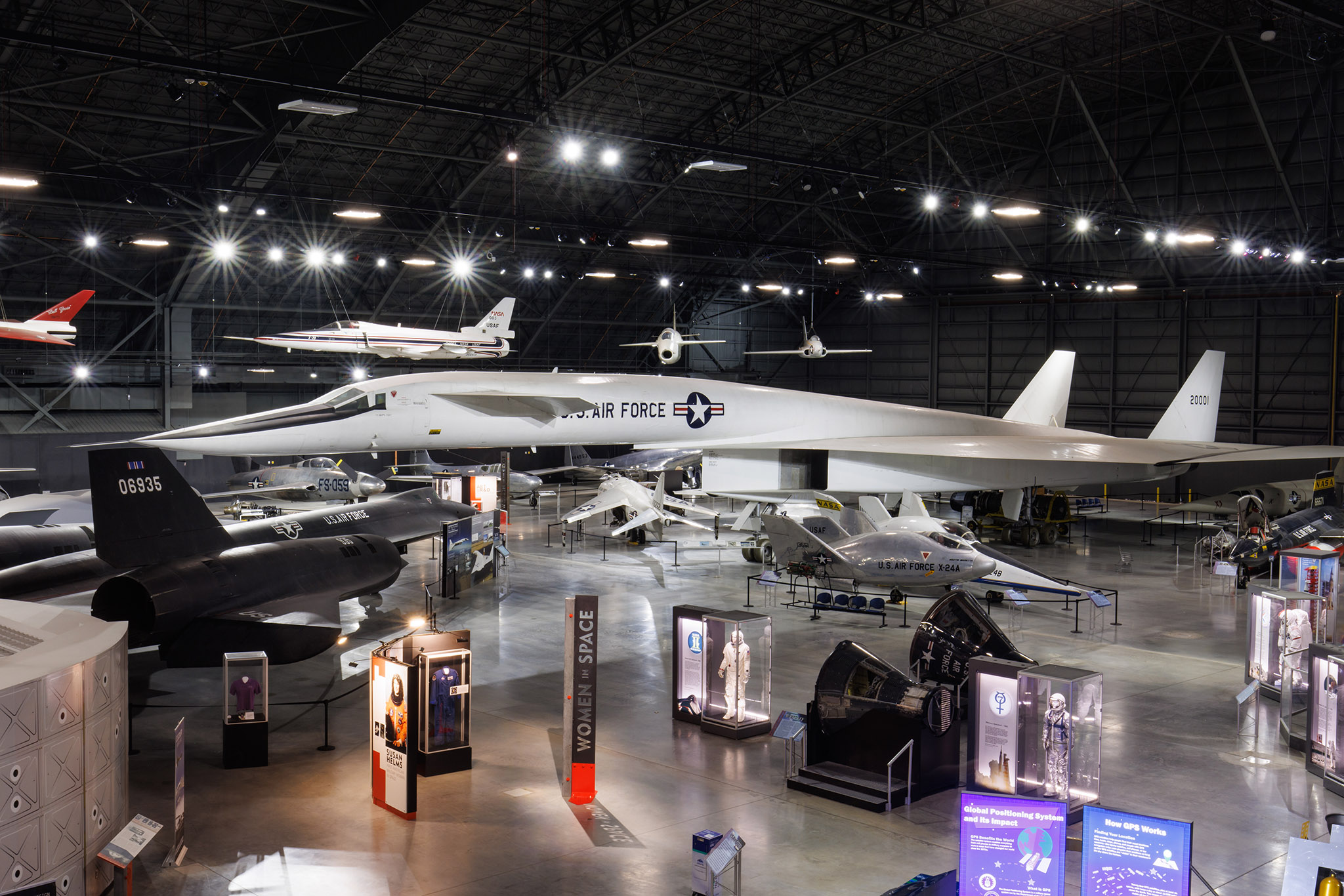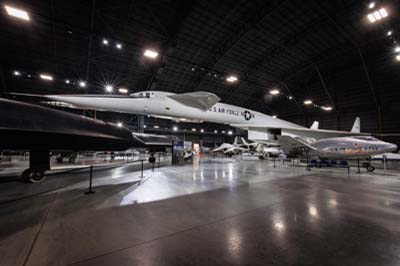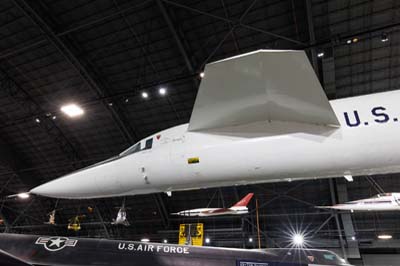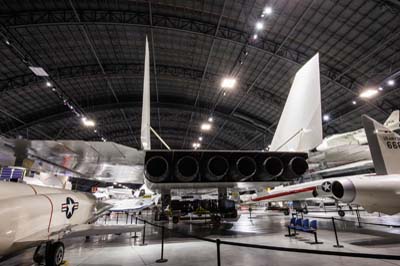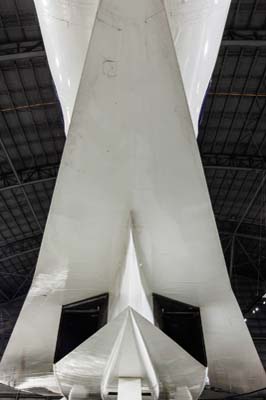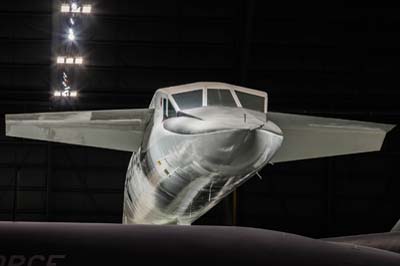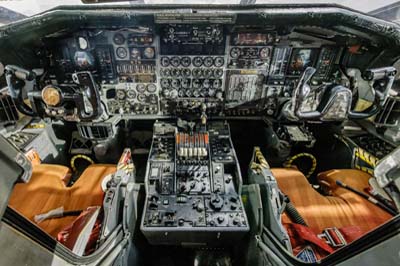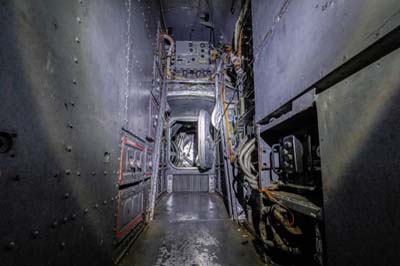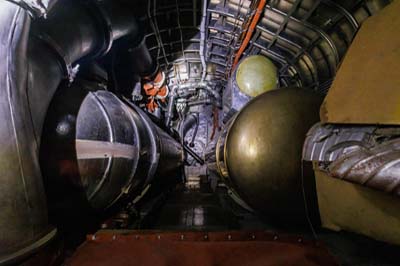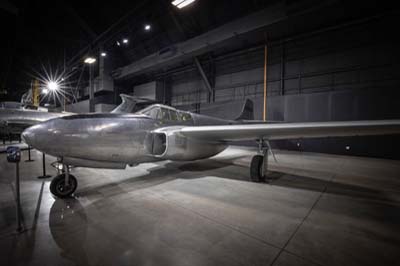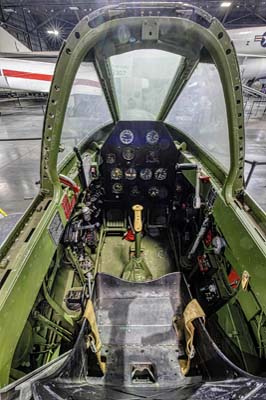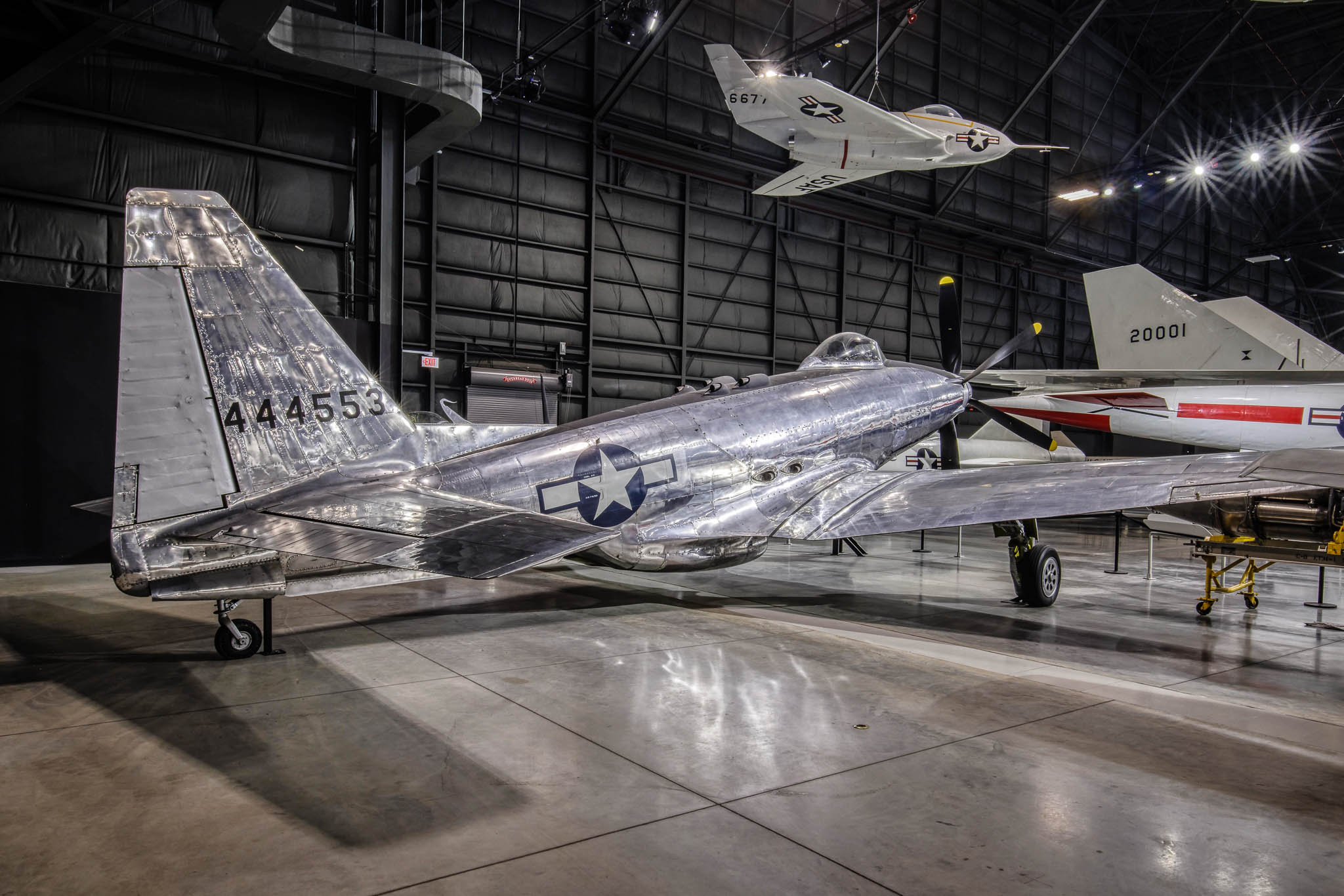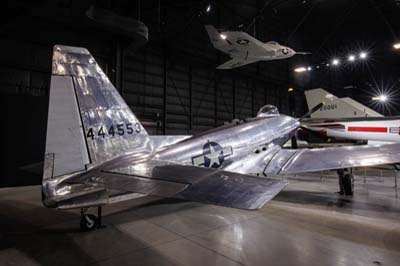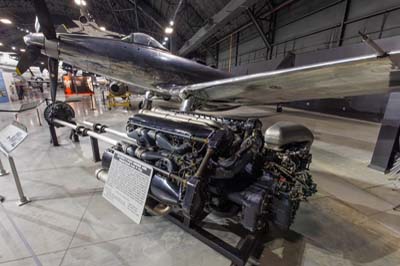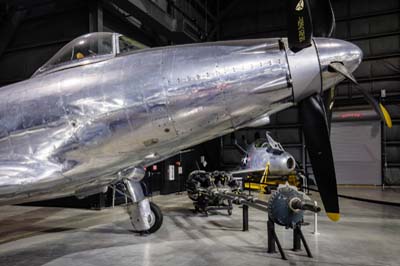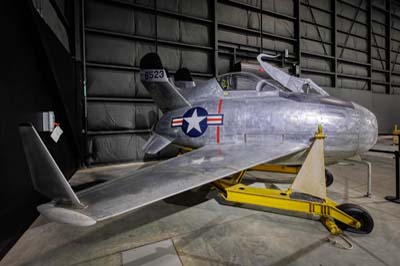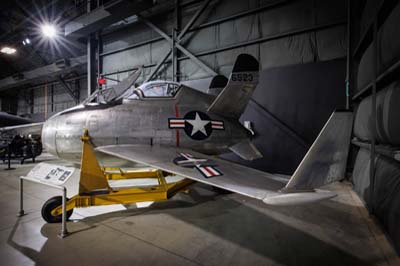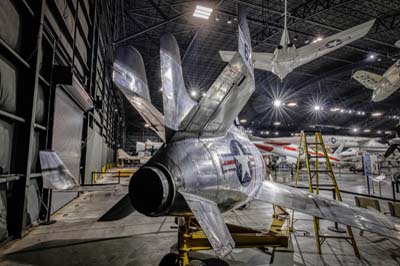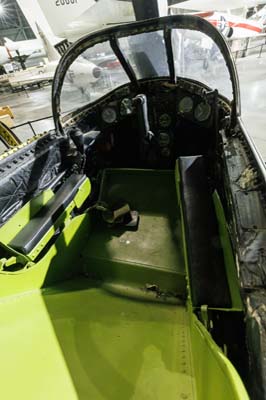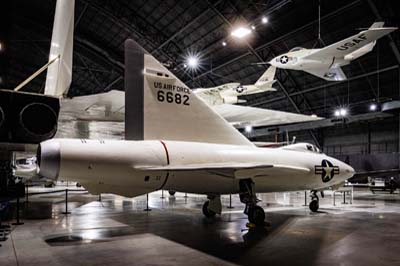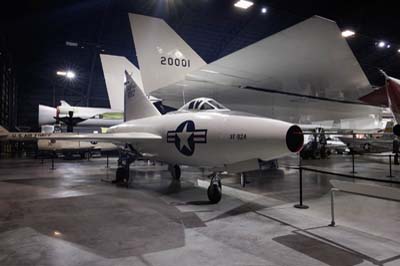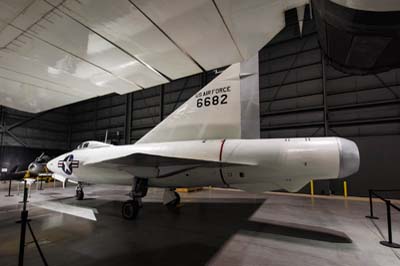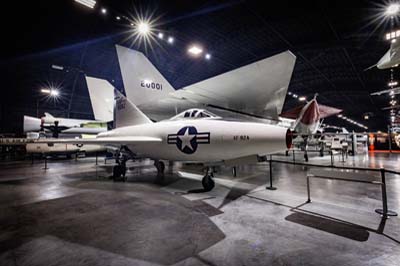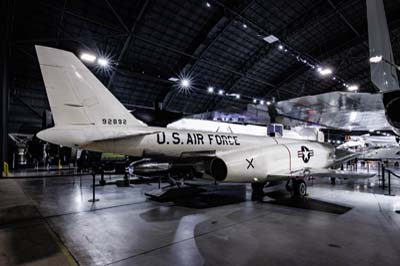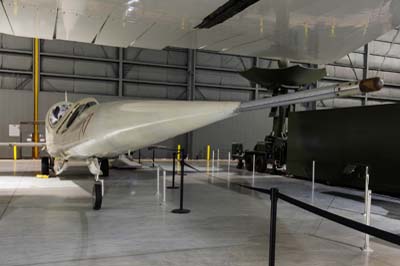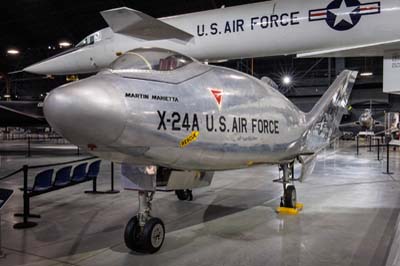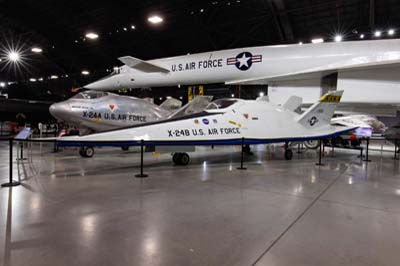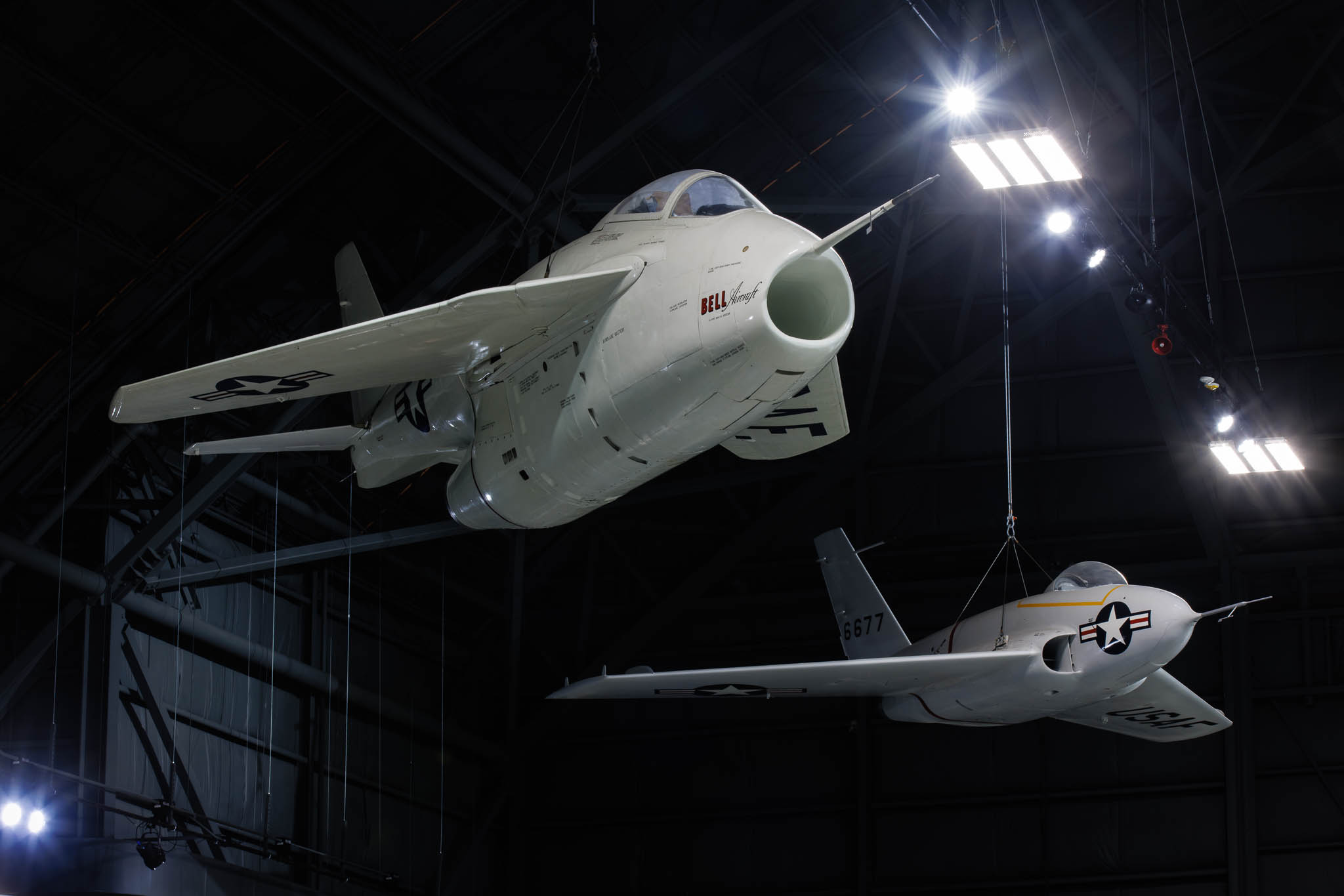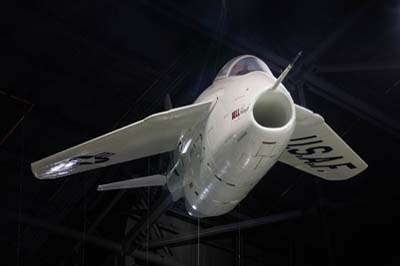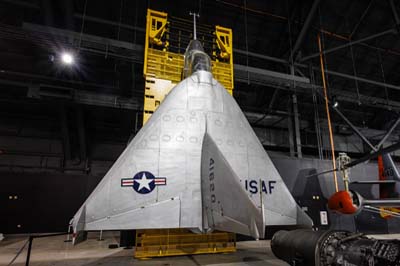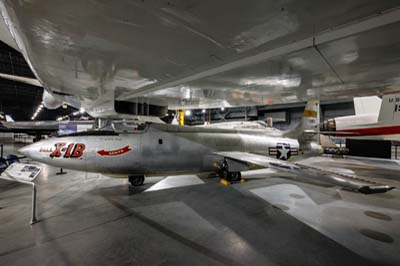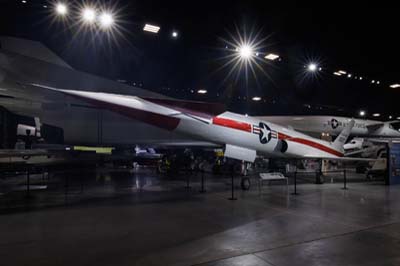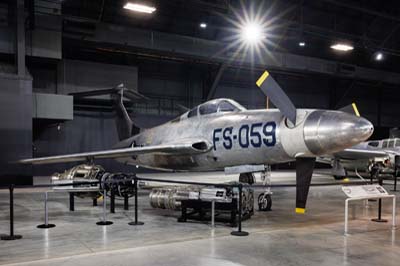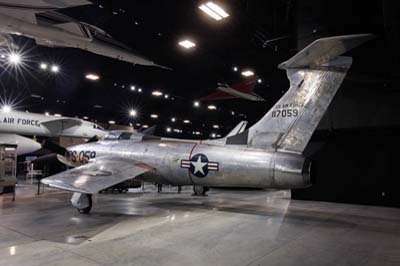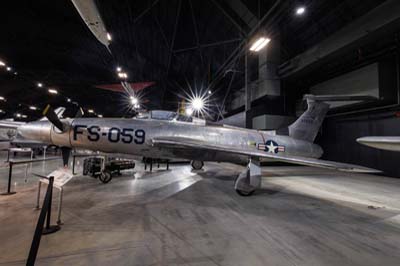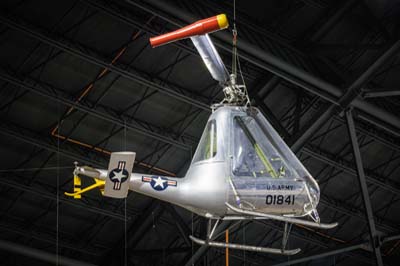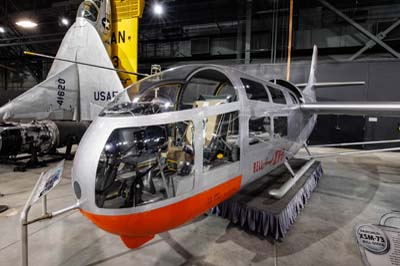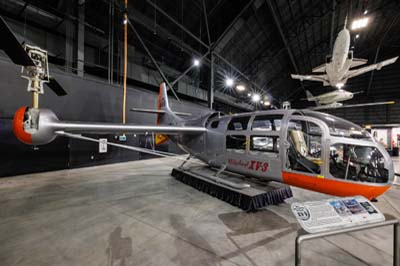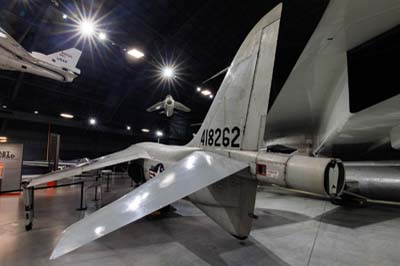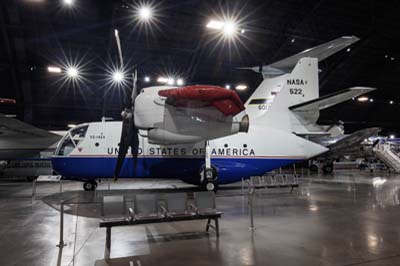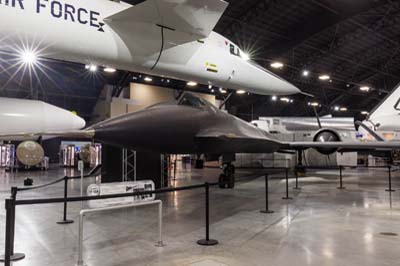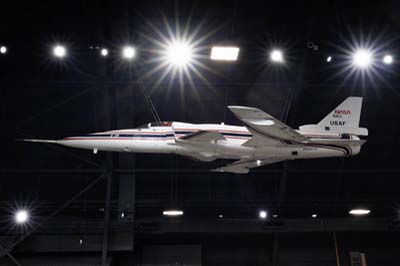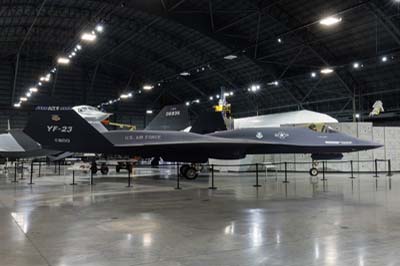National Museum of the US Air Force
Wright-Patterson Air Force Base, Dayton, Ohio
July 23 to 25, 2023
|
| Research and Development Gallery |
| North American XB-70A Valkyrie (62-0001). The XB-70 Valkyrie remains the largest and heaviest aircraft ever to reach Mach 3. It was designed to be a deep-penetration bomber, intended to evade enemy defenses and deliver nuclear weapons. The B-70 program was initiated in the 1950s, but was canceled in 1961 due to high costs, rising concerns about the vulnerability of penetrating bombers to new surface-to-air missile systems, and the increasing threat of intercontinental ballistic missiles (ICBMs). Two XB-70 prototypes were built and flown for research purposes. The first flight of the XB-70 was in 1964. The second XB-70 was destroyed in a mid-air collision in 1966. |
| Left to right: North American XB-70A Valkyrie (62-0001). Not the easiest aircraft to photograph. It is surrounded by research and development aircraft and dominates the gallery. I was fortunate to be able to visit the cockpit, it needed a cherry-picker and harness to get up there. |
| Left to right: Bell P-59B Airacomet (44-22650 'PJ-650'). The 30 P-59Bs built were assigned to the 412th Fighter Group to familiarise pilots with the handling and performance characteristics of jet aircraft. It was under-powered and not a great success. |
| Left to right: Fisher P-75A Eagle (44-44553). Powered by a V-3420-19 24-cylinder engine rated at 2,600 hp driving co-axial contra-rotating propellers, it flew for the first time on November 17, 1943. |
| Left to right: McDonnell XF-85 Goblin (46-523). It was designed to deploy from the bomb bay of the Convair B-36 bomber as a parasite fighter. However, flight test indicated that it was inferior to current jet fighter aircraft. |
| Left to right: Convair XF-92A (46-682). The World's first delta-winged jet and interceptor prototype leading to the F-102 and F-106. The only example built first flew on September 18, 1948. On October 13, 1949 Chuck Yeager was the first USAF pilot to fly the experimental aircraft reaching Mach 1.05 for a brief time in a 4 g split-S dive. It was found to be underpowered and difficult to fly. |
Left to right: Douglas X-3 Stiletto (49-2892). First flight October 15, 1952. Designed to investigate features suitable for sustained supersonic speeds, including the use of titanium for the first time.
Martin Marietta X-24A (SV-5J) (marked '13551' c/n 2). The SV-5J was a jet-powered version of the rocket-powered X-24A. It made its first, unpowered, glide flight on April 17, 1969. As the original X-24A was converted to X-24B, one of the SV-5Js was converted to represent the X-24A, for display at the museum.
Martin Marietta X-24B (66-13551). Modified from a X-24A (66-13551). |
| Bell X-5 (50-1838) with Northrop X-4 Bantam (46-677) the first flight was on December 15, 1948. |
Left to right: Bell X-5 (50-1838). It was the first aircraft capable of changing the sweep of its wings in flight.
Ryan X-13 Vertijet (54-1620). An experimental vertical take-off and landing (VTOL) jet aircraft. Flown conventionally on December 10, 1955 to test its aerodynamic characteristics. On May 28, 1956, it was flown from the ground in a vertical position to test its hovering qualities. A full-cycle flight ws achieved on April 11, 1957.
Bell X-1B (48-1385). A rocket engine–powered aircraft built for supersonic research. Built in 1945, it achieved a speed of nearly 1,000 miles per hour in 1948.
North American X-10 (51-9307). An unmanned technology demonstrator, its first flight was made on October 14, 1953. |
| Left to right: Republic XF-84H 'Thunderscreech' (51-17059 'FS-059'). An experimental turboprop aircraft derived from the F-84F Thunderstreak. Test program cancelled due erodynamic deficiencies and engine reliability problems. First flown on July 22, 1955. It was given the name 'Thunderscreech' due to its incredible loud engine noise. The blades on the XF-84H's propeller traveled faster than the speed of sound even at idle thrust, producing a continuous visible sonic boom that radiated laterally from the propellers for hundreds of yards. The shock wave was actually powerful enough to knock a man down. |
Left to right: American Helicopter XH-26 Jet Jeep (50-1841) an experimental tip jet helicopter developed in 1951.
Bell XV-3A (54-148) a prototype tiltrotor aircraft.
Hawker Siddeley XV-6A Kestrel (64-18262 '2' previously XS688). The experimental and development aircraft that led to the Hawker Siddeley Harrier. |
Left to right: LTV-Hiller-Ryan XC-142A (62-5924 later NASA 522) A Tilt-rotor helicopter built in the 1960s to explore the suitability of Vertical/Short Take-off and Landing (VSTOL) transports.
Lockheed YF-12 (60-6935). A Mach 3+ capable, high-altitude interceptor prototype, it first flew on August 7, 1963.
Grumman X-29 (82-0003). An experimental aircraft to test a forward-swept wing and canard control surfaces. Its maiden flight was on December 14, 1984.
Northrop/McDonnell Douglas YF-23A Black Widow II (87-0800). |
